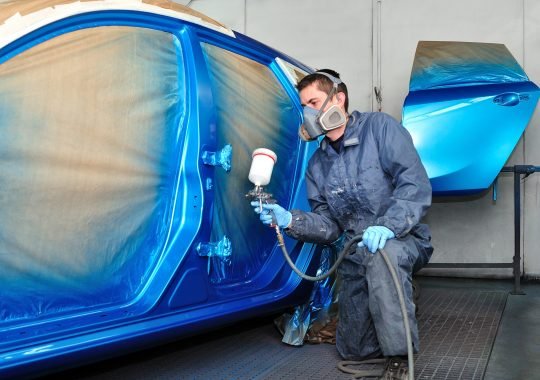The peculiarity of the free differential is that when slipping one wheel (drive axle), the torque transmitted to the other is insufficient for movement. The differential lock is designed to increase the torque on the wheel (axle) with better grip.
In order to block the differential, you must do one of two things:
- connect the differential case to one of their axles;
- limit the rotation of the satellites.
Depending on the degree of blocking, the differential lock can be full or partial. Complete differential lock assumes a rigid connection of the differential parts, in which the torque can be fully transmitted to the wheel with better grip.
The partial differential lock is characterized by a limited amount of transmitted force between the differential parts and the corresponding increase in torque on the wheel with better grip.
The magnitude of the increase in torque on the freewheel is estimated by the blocking coefficient. In other words, the blocking coefficient expresses the ratio of the torque on the lagging (free) wheel to the moment on the running (stalling) wheel. For asymmetric free differential, the blocking coefficient is 1, because the torques on each of the wheels are always equal. In a locked differential, the blocking coefficient may be in the range of 3-5. A further increase in the blocking coefficient is undesirable since may damage the transmission components.
The differential lock is applied both on inter wheel differentials and on interaxal differentials. The front-wheel differential of a four-wheel-drive car is usually not locked, so as not to reduce handling.
The differential lock can be forced and automatic. The differential lock is forced by the driver’s command, therefore its other name is manual locking. Automatic differential lock is performed using special technical devices – self-locking differentials.
Differential differential lock
The forced differential lock is usually made using a cam clutch, which provides a rigid connection of the differential housing and one of the axle shafts.
Closing (opening) of the cam clutch is carried out using a mechanical, electrical, hydraulic or pneumatic drive.
A mechanical drive combines a lever and cables or a lever system. The differential is locked by the driver by moving the lever to a specific position on a stationary car.
The hydraulic differential lock actuator includes the master and slave cylinders. The actuating element of the pneumatic drive is a pneumatic cylinder (pneumatic chamber). In an electric drive, an electric motor is used to close the coupling. The differential lock is activated (drive initiation) by pressing the corresponding button on the instrument panel.
Rigid forced blocking is used to overcome difficult areas by the car, and when they pass, it is necessarily turned off. It is used in cross-axle and interaxle differentials of four-wheel-drive cars.
Limited slip differential
A limited slip differential (another name is a limited slip differential , Limited Slip Differential, LSD) is inherently a compromise between a free differential and a full differential lock, as allows you to implement, if necessary, the possibilities of both.
There are two types of self-locking differentials: those that are blocked from the difference in angular speeds of the wheels and those that are blocked from the difference in torque.
The first includes a disk differential, a differential with a viscous coupling, and also the so-called electronic differential lock. The worm differential is blocked depending on the difference in torque.
The simplest disc differential is a symmetrical differential in which one or two packages of friction discs are added. Some friction discs are rigidly connected to the differential case, the other part is connected to the axle shaft.
The principle of operation of a limited-slip differential of a disk type is based on the friction force arising from the difference in the speeds of rotation of the axle shafts.
Trade Cars for Cash offers its “car removal and cash for cars services in all of Sydney regions and surroundings. Providing our services for over 15 years, our team is highly trained and professional making it certain that our clients always get our services with convenience and reliability.
We offer a variety of services including instant cash for cars offers that promise to give you a top quote on your vehicle of up to a whopping $9999. Our expert team of appraisers knows all kinds of vehicles helping you get the most out of your old or damaged vehicle.





